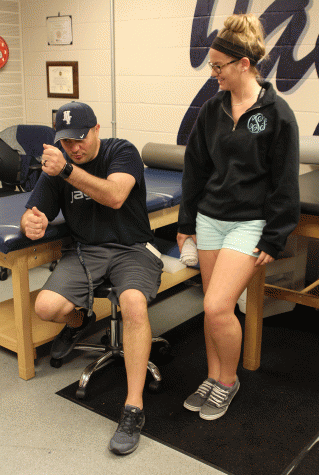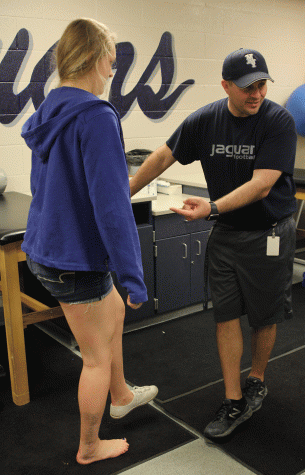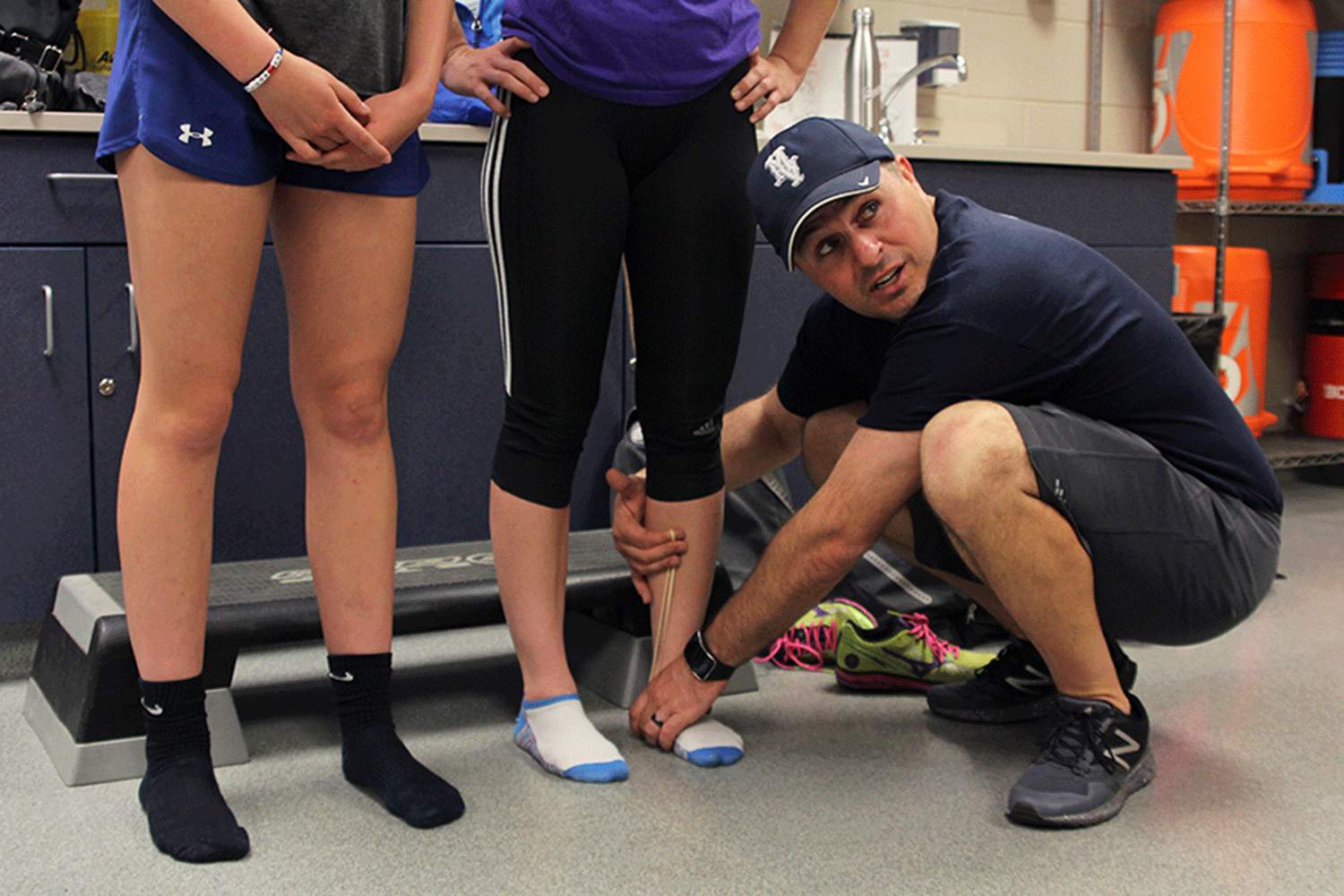Working with athletic trainer Clint McAlister helps students learn about sports medicine, physical therapy
Student trainers gain experience in athletic training, while other students who visit McAlister learn by watching and interacting with him
May 1, 2016
For students interested in sports medicine or physical therapy, the most applicable knowledge they learn in school might not come from classes like Biology and Human Anatomy and Physiology, or even from time in a classroom. Instead, it could come from spending time in the athletic trainer’s office, learning from athletic trainer Clint McAlister.

McAlister’s main job is to treat and prevent sports-related injuries among students, whether those injuries come from training, school sports or club sports. A few years after the school opened, when approached by a teacher with a student interested in sports medicine, he began to allow students to become student trainers to learn more about what he does in his job.
“I know that the Olathe school district has a 21st Century Program [where] they have sports medicine classes, and then Blue Valley started their [Center for Advanced Professional Studies] program for that,” McAlister said. “I know, in order for our kids to be able to compete with them when they go out to get into these programs at the next level, we have to have some kind of experience, and that’s why I started it.”
This year, McAlister has six student trainers, but because some only work for certain seasons, he has two for the spring. These trainers can do simpler work like taping athletes and making ice bags, and they also shadow Clint as he looks at and treats injuries.
Sophomore Miranda Toland has worked as a student trainer for about a year. She said she’s interested in pursuing medicine in college, and especially considering athletic training because of her work with McAlister.
This is the top of the list, for sure,” Toland said. “I’m going to have a lot of knowledge going into college. Like, I’m not going in not knowing anything; I’m going to have three years under my belt of experience.
Since not all of his student trainers are considering athletic training in specific — some are just interested in medicine — McAlister said he tries to teach skills and information that can be applicable regardless of what medical profession a student pursues.

“I hope that they take things that they can learn — not necessarily everything that they learn from me — but the ability to start using that information and to be good problem solvers,” McAlister said. “I do stress often to think outside of the box, get away from the book. Hopefully they take that and use it.”
Not all students who learn from McAlister are student trainers either, though. Senior Ellie Wilson said she visits McAlister multiple times per week to watch him work and talk with him.

“I don’t usually go down because I’m injured, I like to go down because I like to learn from him,” Wilson said. “I’m in Anatomy, and I really like that class, so when I go in Clint’s room and hang out, I feel like I can apply what I’ve learned, and he talks about stuff that he learned in college and stuff that he knows now.”
Junior Charlsey Seidel, the other trainer for the spring season, said working with McAlister benefits her and others because of how he conveys his knowledge.
“Clint does a good job of explaining things to the athlete who’s injured, to the student who’s shadowing him and to the coaches as well,” Seidel said. “He just makes sure you get a good understanding of what’s going on with you, how you can do to help.”
In addition to helping students learn about athletic training, McAlister also develops a rapport with some of his students, which he attributes to the atmosphere of working with him.
“I hear about prom, I hear about whatever’s going on around the school,” McAlister said. “It’s a very laid back setting. I’m not necessarily seen as a teacher or coach to them, so I think they feel like they’re a little bit more relaxed around me.”
Wilson agrees with McAlister’s sentiments.
“He’s just fun,” Wilson said. “He’s different than a teacher, because I feel like we’re really close to him. I look at him like, obviously he’s not my friend, but he treats us like we’re all his buddies, and it’s a neat atmosphere to be in.”
